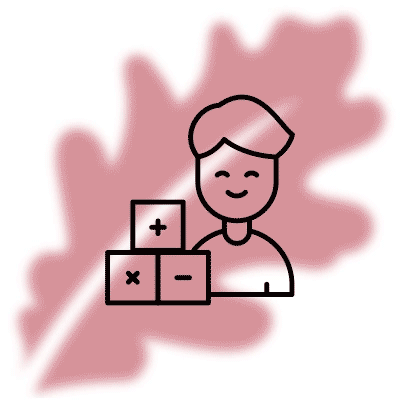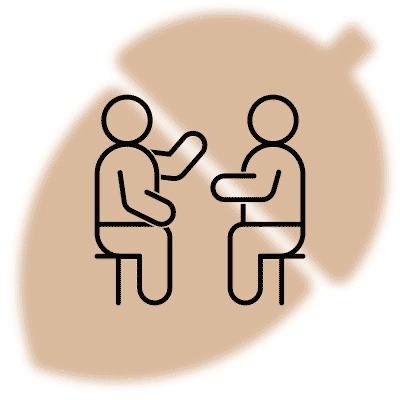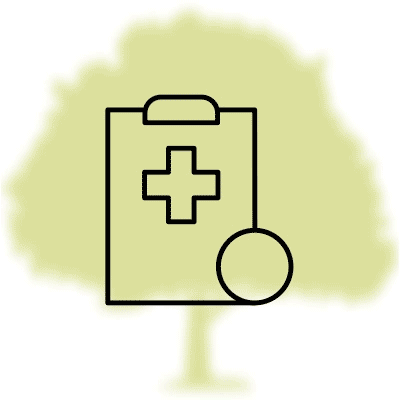Retained Neonatal Reflexes
The right decision for parents supporting child development.
We Understand Your Pain
At The Oak Practice, we recognise the challenges faced by children and parents dealing with retained neonatal reflexes. These reflexes can slow down a child’s development a lot, causing problems with how they move, learn, and feel. Lots of parents feel frustrated and hopeless because regular ways of helping don’t always fix the main issues, making progress really slow.

The Challenge of Retained Neonatal Reflexes
Even with all their efforts, lots of parents find that usual treatments don’t quite do the job, giving only short-term help or partial solutions. They often get care that’s not all put together and advice that’s not always the same, which can make the problem worse and keep them feeling frustrated and disappointed. These experiences leave parents feeling helpless, constantly seeking an effective and comprehensive solution.
Types of Retained Neonatal Reflexes
Also called the startle reflex, is something babies often do when they’re born and stops around 4-6 months. It’s when their arms and legs suddenly shoot out because of a loud noise or sudden movement. If retained, it can make kids very sensitive, anxious, and not good at handling changes. They might get very jumpy at loud noises and have trouble keeping their balance and moving smoothly.
Present from birth, this reflex causes a baby to automatically grasp any object placed in their palm. It should integrate by 4-6 months. If retained, it can result in poor fine motor skills, difficulty with handwriting, and a weak pencil grip. Adults may experience muscle fatigue and poor dexterity, affecting tasks that require precise finger movements.
This reflex prompts a newborn to turn their head toward a touch on the cheek, aiding in breastfeeding. It typically integrates by 3-4 months. Retention can lead to hypersensitivity around the mouth, speech difficulties, and challenges with swallowing and chewing. Children may also exhibit fussy eating behaviours and issues with articulation.
This reflex is triggered when a baby’s head is turned to one side, causing the arm and leg on that side to extend while the opposite limbs flex. It should integrate by 6 months. If retained, it can impact hand-eye coordination, balance, and the ability to cross the midline, which is essential for activities like writing and reading.
This reflex involves a baby’s hips moving toward the side of the spine that is stroked. It usually integrates by 3-9 months. Retention can result in bedwetting, poor posture, and difficulty sitting still. Children may also experience lower back pain and issues with attention and concentration due to constant fidgeting.
Present from birth, the TLR helps develop muscle tone and balance. It should integrate by 3 years. Retention can cause poor balance, coordination issues, and problems with spatial orientation. Children may struggle with activities that require smooth coordination of movement, such as riding a bike or swimming.
Babies usually start exhibiting this reflex at around 6-9 months of age, and it usually disappears by the time they reach 11 months. It involves the arms bending and the legs straightening when the head is bent down, and vice versa. If retained, it can mess up crawling, sitting, and walking. Kids might also find it tough to do things that need both their upper and lower body to work together, like climbing stairs.
This reflex helps a fetus respond to stress in the womb by temporarily ceasing movement. It should integrate before birth. If retained, it can make kids very scared, nervous, and really sensitive to things like noise or touch. They might freeze up when they’re stressed, which can make it hard for them to talk to others or handle changes.
Similar to the palmar reflex, this causes the toes to curl when the sole of the foot is stroked. It should integrate by 9-12 months. Retention can lead to poor balance, difficulty walking, and foot pain. Children may struggle with activities that require strong and stable foot positioning, such as running and jumping.
These reflexes link hand and mouth movements. They should integrate by 4-6 months. Retention can affect speech and facial muscle control, leading to issues with articulation and facial expressions. Children may also have difficulty using cutlery and other tools requiring fine motor skills.
This reflex helps with balance and spatial orientation. It should integrate by 3 years. Retention can cause motion sickness, poor balance, and spatial difficulties. Children may struggle with activities that require good spatial awareness, such as sports and navigation.
This reflex supports breastfeeding by making the tongue move forward and backward. It should integrate by 4-6 months. But if it sticks around, it can make talking and swallowing hard, cause problems with teeth, and make eating and drinking tough. Children might also struggle to say words right and might need braces or other dental care.
This reflex aids in concentration and posture. It should integrate by 3 years. Retention can cause difficulty focusing, poor posture, and coordination issues. Children may slump at their desks and struggle with activities requiring simultaneous use of the upper and lower body.
These reflexes influence balance and muscle control. They should integrate by 9-12 months. Retention can cause toe walking, balance problems, and muscle tension. Children may experience difficulties with activities requiring precise foot movements and balance, such as dancing and gymnastics.
Present at birth, this reflex helps with pelvic and bladder function. It should integrate by 9-12 months. Retention can lead to bladder control issues, pelvic floor problems, and hormonal imbalances. Children may also experience challenges with coordination and posture.
Our Approach to Treatment
At The Oak Practice, we have a special and complete way of dealing with retained neonatal reflexes. We look at all the different parts of your child’s growth and work on fixing them together. Our detailed treatment plans are made just for your child, making sure we don’t miss anything important.
By addressing the root causes and related factors, we help your child achieve meaningful progress and overall well-being, providing a clear path to developmental success.
Resolve Your Situation Today
Stop letting retained neonatal reflexes hinder your child’s development. Our specialised approach offers quick and lasting relief, allowing your child to return to daily activities and enjoy life without ongoing struggles.
Why Our Approach is Different:
- Comprehensive Assessment: We start with a thorough evaluation to understand the impact of retained neonatal reflexes on your child’s development, covering medical history, lifestyle, and contributing factors.
- Personalised Treatment Plans: Our plans address the root causes of retained reflexes, combining various methods to create an effective strategy.
- Physical Relief: Our techniques aim to reduce physical discomfort and improve overall well-being, targeting the manifestations of retained reflexes.
- Emotional and nutritional Well-being: We address stress, anxiety, and diet, promoting a healthier internal state for your child.
- Ongoing Support: We offer continuous help and track progress, adjusting the treatment plan as needed for comprehensive recovery.
- Integrated Care: Our holistic approach looks at every part of your child’s health, like how they sit, handle stress, and their daily routines, to give them the best solution possible.
Your First Session

Thorough Check-up
We’ll start with a complete check-up to understand the impact of retained neonatal reflexes, involving a detailed physical exam and a discussion about your child’s medical history, lifestyle, and symptoms.

Personalised Plan
Using what we find in the assessment, we’ll create a treatment plan that’s just for your child. This could include exercises, advice on eating well, and other ways to fix the main reasons behind retained reflexes.

Holistic Approach
Our goal is to offer your child a treatment that looks at all sides of retained neonatal reflexes, helping them feel better for good and improving their overall quality of life.
Client Stories
At The Oak Practice, we’re devoted to providing individualised care and complete treatments that get to the bottom of retained neonatal reflexes. Our clients regularly have great outcomes, proving how well our personalised method works. Here are some stories of people who’ve seen big changes because of our treatments:
Frequently Asked Questions
In your child’s initial visit, we’ll begin by doing a thorough check-up to see how those reflexes are influencing their growth. We’ll carefully examine their body and have a chat about their medical background, how they live, and any symptoms they’re experiencing. Using this evaluation, we’ll devise a personalised treatment plan.
The outcome changes based on each person and how serious their retained reflexes are. Some kids might notice improvements after a few sessions, but for others, it might take longer. Following the treatment plan regularly is really important.
Our treatments are designed to be gentle and non-invasive. Most children find the sessions comfortable and stress-free. We prioritise your child’s comfort and well-being throughout the process.
The price of treatment changes depending on what your child needs and how long the treatment plan lasts. We’ll give you a clear breakdown of costs during your first meeting, so you know exactly what to expect.
Retained neonatal reflexes can affect how well your child moves, thinks, and deals with their emotions. Fixing these reflexes can lead to big improvements in their growth and happiness.
The frequency of sessions depends on your child’s specific needs and progress. Typically, sessions may be weekly or bi-weekly, but this will be tailored to ensure the most effective treatment.
Yes, we want parents to be there during sessions. It’s really important for you to understand what’s happening with the treatment and to help your child keep improving at home.

